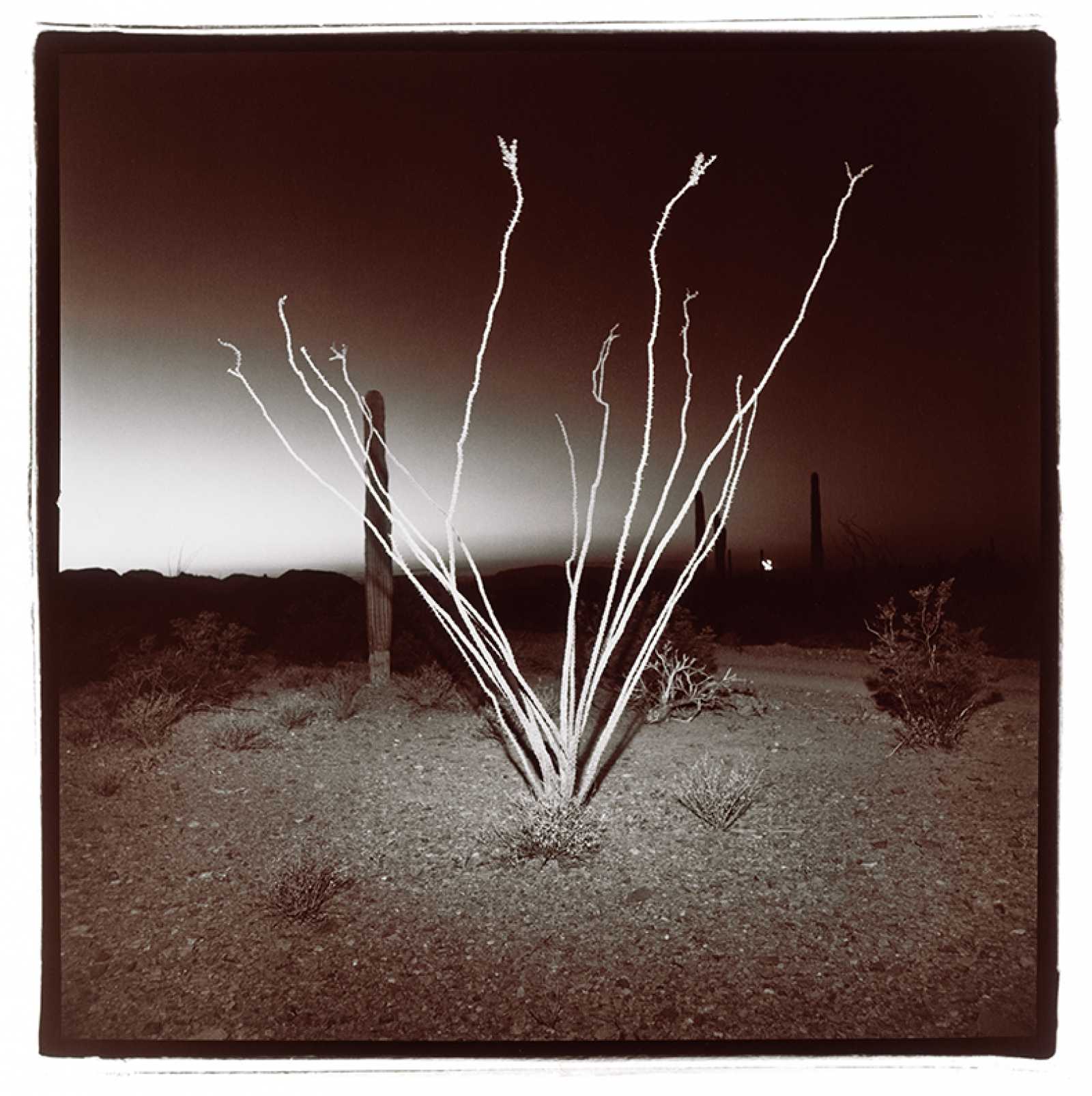Artwork of the Week
Richard Misrach
Richard Misrach focuses on the deserts of the American West and is recognized internationally for the cultural, social, political, and environmental emphasis he brings to landscape photography. Night Desert Series, which he began in the mid-1970s, represents the artist’s first photographic exploration of desert plants, rocks, and terrain. With the aid of carefully set and timed spot-lighting, Misrach transformed his subject in Plate 33, Ocotillo #1, Arizona into an enchanting stage setting, with the sepia toning evoking a mysterious atmosphere. The toning varies from print to print, at times significantly, making each print in this series unique.
Born in Los Angeles, Misrach earned a B. A. in psychology from University of California at Berkeley, where he continues to live. He helped popularize large-format color photography in the 1970s and 80s, and in 1979 he received a Guggenheim Fellowship. Best known for his ongoing series, Desert Cantos, Misrach has worked as a landscape photographer for over 40 years. Beginning in 2004—and increasing since 2009—he has been photographing the US-Mexico borderlands and critically exposing the unseen realities in a series called Border Cantos.
Richard Misrach (American, born 1949), Plate 33, Ocotillo #1, Arizona (from Night Desert Series), 1975, split-toned gelatin silver print, 14 3/4 × 14 5/8 inches. Gift of L. J. Cella, 2015.6.
Poli Mana
The Hopi believe that Katsinam bring spiritual well-being into the physical world. There are over 300 different Katsinam, and their carved doll forms are used to educate children in the teachings and principles of Hopi culture, including the fundamental belief in living in harmony with nature and strong ethical principles regarding good behavior.
Poli, or butterfly dancers, are similar to Katsinam but are not true Katsina dolls. Like Katsinam, however, they are carved from cottonwood root and decorated with paint and accessories, and are then given to girls as a blessing. This Poli Mana, or butterfly maiden, represents a young female dancer. The butterfly dance is a popular social affair where young people of marriageable age meet. The butterfly, a motif used by many ancient cultures, often symbolized springtime, youth, fertility, and renewal. This figure wears a large decorative tableta, or headdress, a traditional black dress, a ceremonial yellow shawl with a blue border, and moccasins.
Hopi or Pueblo, Poli Mana (Butterfly Maiden), c. 1920, painted wood and feathers, 11 1/4 × 3 15/16 × 2 9/16 inches. Gift of Mr. and Mrs. James G. Swinnerton, A23-1975.


